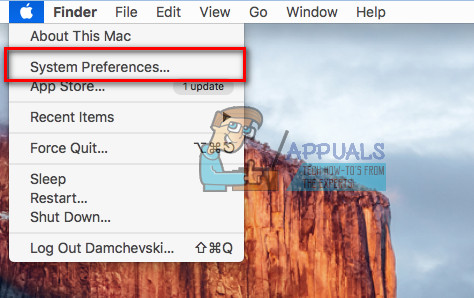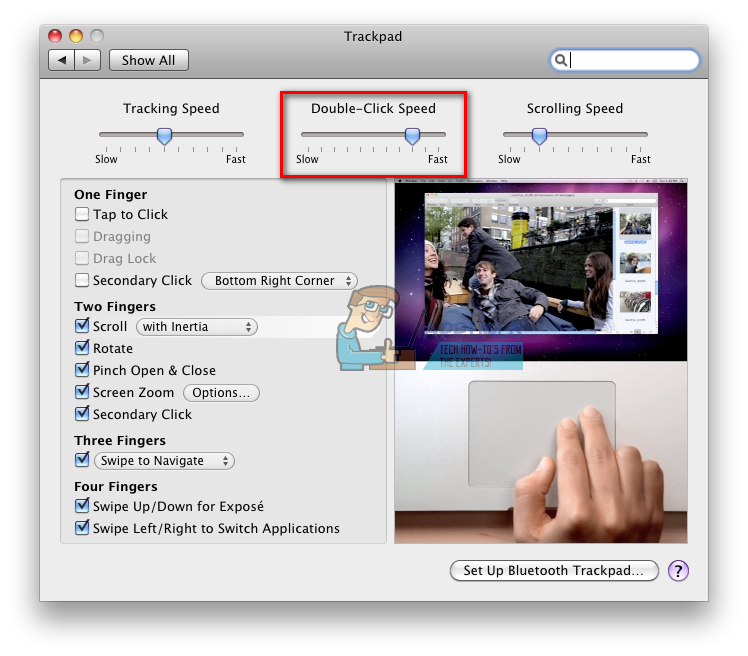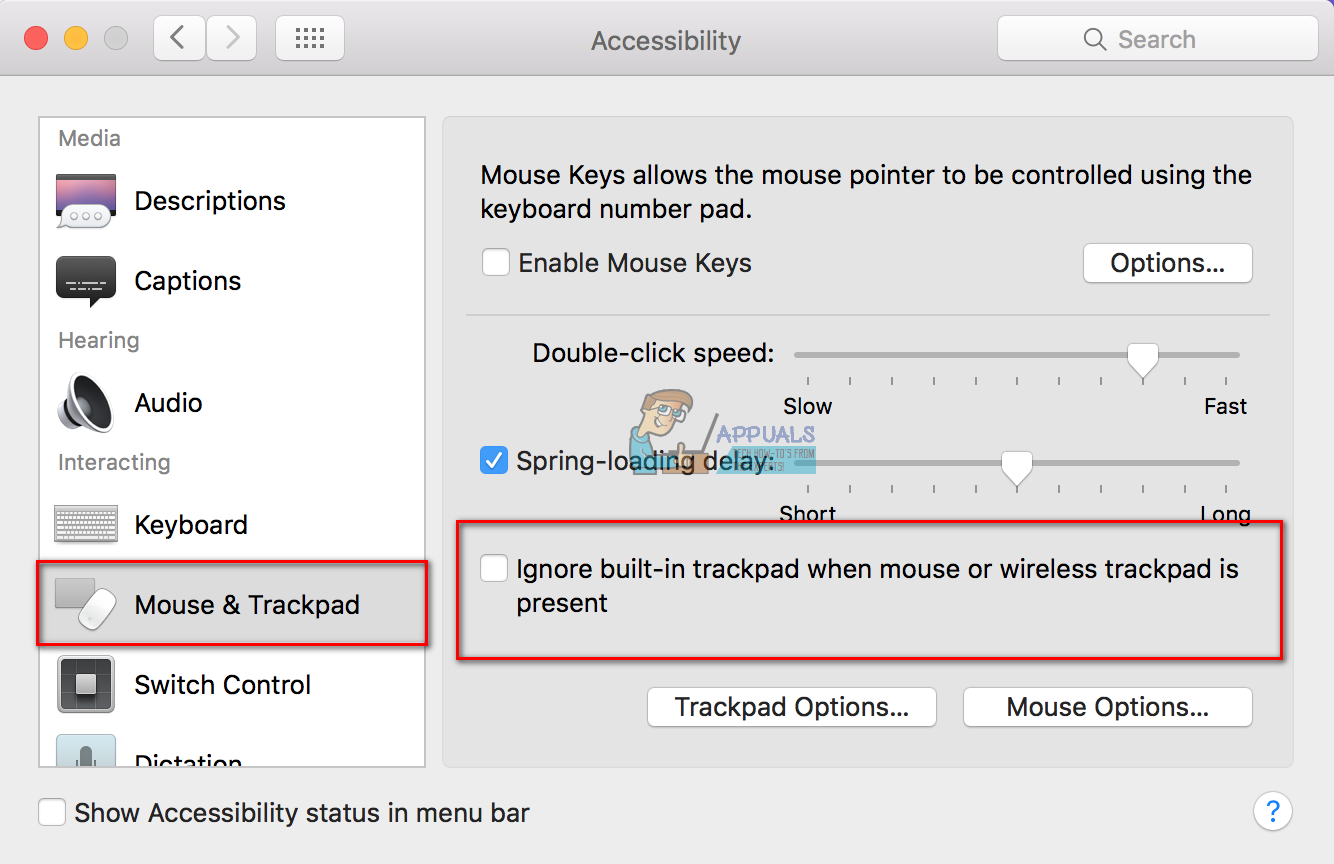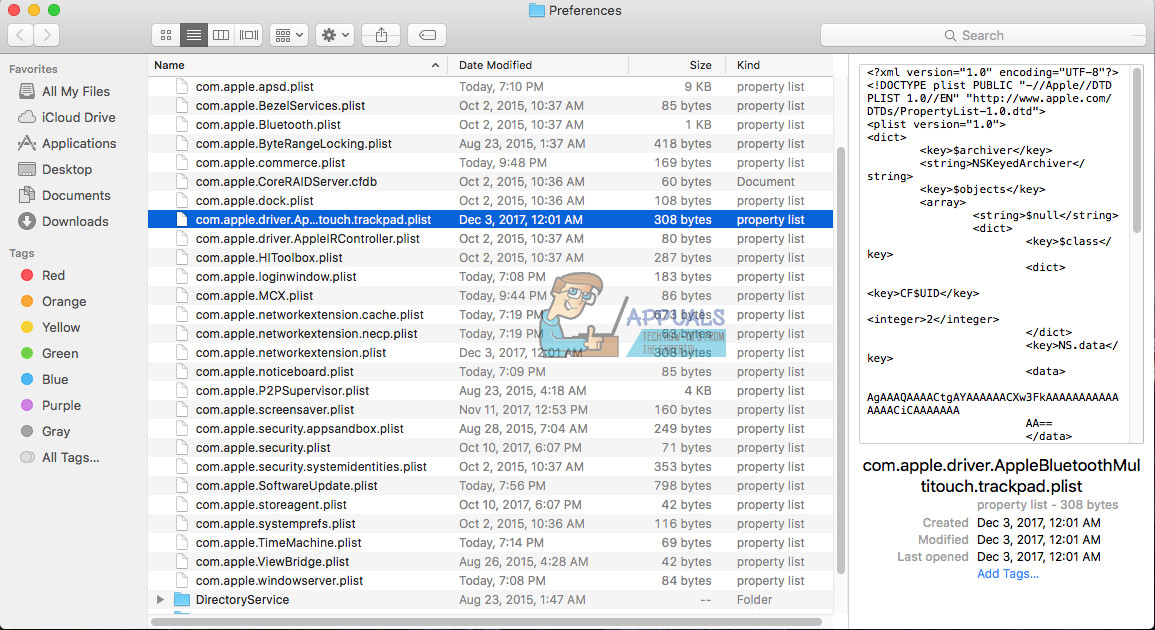Fix: Mac Trackpad Not Working
Mac computers are high-quality, sophisticated machines that we all like. One thing that makes both iMacs and MacBooks stand out from the crowd are huge, multifunctional trackpad. MacBooks have it built in, while iMac users may get it as a peripheral device. However, in technology, nothing is 100% prone to defects, neither Mac’s trackpads. Unfortunately, many MacBook and iMac users have noted that their favorite trackpad doesn’t work. For some, it’s button is not registering a click. And, for others, the pointer is not responding at all.
If you have a MacBook or iMac that has a non-working or malfunctioning trackpad and want to fix it, there are few possible solution for it. And, you don’t need to be an expert to do them. You just need to follow the methods explained below. So let’s begin.
Method # 1: Check for macOS Updates
This may sound obvious, but it is surprising how many users aren’t using the latest version of the operating system, the latest drivers, or latest firmware. Many of the trackpad issues on MacBooks and iMacs are caused by glitches or bugs in the operating system or drivers.
- To check if any updates are available for your trackpad, launch the App Store on your Mac and click on the Updates
- Now, search for anything called “Trackpad Firmware Update,” (or something similar).
- If you found something, click on the update button and follow the on–screen instructions.
Note: The best practice is to update all the drivers regularly. That’s how you will prevent many potential problems on your Mac.
Method # 2: Check The Settings
If your Mac operating system is up to date, and you still have a non-working trackpad, check the settings. Many complaints can be fixed by merely tweaking few options. Here is how to launch your trackpad settings.
- Click on the Apple icon in the top left corner of your screen.
- No, choose System Preferences from the menu.
- From the System Preferences window launch the Trackpad app

Now, depending on the problem you have with your trackpad, do the appropriate procedure.
Double Click Not Working?
If you can move the pointer across the screen, but the double-click feature doesn’t work, it is possible that the time delay for your Mac to recognize the gesture has been set too low. This is a common problem for many new trackpad users, who are used to operate only with a mouse. However, that’s why we can edit the settings and adjust the trackpad to our needs.
- While at the Trackpad settings, locate the Double–click speed slider and set it at a lower level. (Somewhere in the middle area is adequate for most users, but you can lower it more if needed)
- After placing it at the wanted level, check if the double–click problem still exists.

Is Your Pointer Hard to Control?
Some users suffer from an overly responsive pointer, which is hard to control. If this is happening in your case, you should try adjusting the tracking speed. Here is how to do that.
- While at the trackpad settings locate the Tracking speed slider.
- Set it somewhere in the middle and try your trackpad responsiveness. (If not enough, feel free to slide it at the level you prefer)
![]()
Completely Unresponsive Trackpad?
If none of the previous tricks didn’t solve your problem, and your trackpad is entirely dead, this might be the lifesaver for you.
- First, check if you have a physical mouse connected to your Mac (either via Bluetooth or USB).
- If you do, disconnect it, and try if your trackpad works.
If it does, your system has been set up to turn off trackpad input when a mouse is connected. You can easily disable this feature by following the next steps.
- Click on the Apple icon on the menu bar.
- From the drop-down menu choose System Preferences and open the Accessibility section.

- Scroll down in the left panel, and click on Mouse & Trackpad.
- Now, untick the checkbox in front of “Ignore built-in trackpad when mouse or wireless trackpad is present.”

Note: This method may also help if your Mac doesn’t have a mouse connected, but thinks that another peripheral device is a mouse. This often happens with some third-party devices like printers, gaming controllers, keyboards, etc.
Method # 3: Check Your Mac’s Hardware
Sometimes even if you have set all the settings right, Mac’s trackpad may not work due to a hardware flaw. And, if you haven’t succeeded fixing the problem by this point, the odds are that your trackpad issue is of a hardware nature. Don’t get me wrong here. I am not saying that your trackpad’s hardware is damaged. Sometimes the solution might be located in the things that you even didn’t think of.
- When your pointer is jittering or jumping across the screen, check your trackpad’s battery level. If it’s low, plug it into a power source or replace the batteries.
- If you wear some jewelry (wedding rings or bracelets) on the hand that you use for navigating the trackpad, try removing them. They could cause the pad to read various signals at once and gets confused.
- Trackpads do not react well on water. It may cause erratic behavior. So, make sure your fingertips are not sweaty or damp.
MacBook’s Trackpad Works Occasionally?
If owning a MacBook, and its trackpad works occasionally (sometimes it works correctly, but sometimes doesn’t) you may need to check your MacBook’s battery. Exploding and swelling MacBook batteries have been known problem for a couple of years. Unfortunately, Apple claims that it is expected behavior. However, a faulty battery can occur your trackpad behavior and can cause bigger issues on your MacBook. In this case, you should contact Apple Support, especially if your device is still under warranty. If for any reason you can’t, or you don’t want to reach Apple, you can take out the battery, and run your MacBook plugged in. You will experience a significant improvement in the behavior of your trackpad.
Method # 4: If Nothing Helps, Try Deleting Property List Files
If everything else failed, you could try deleting the Property List files. They are the place where your Mac stores users’ settings and information about applications and bundles installed. Deleting them will force your computer to create new ones.
Note: Before performing this method, make sure you back up your Mac using Time Machine.
- To delete the files for your trackpad and mouse, open Finder, click Go, and select Go to Folder.
- Now enter “/Library/Preferences” and click Go.
- Search the directory for the following plist files and delete them.
- apple.driver.AppleBluetoothMultitouch.mouse.plist – Apple Magic mouse
- apple.driver.AppleBluetoothMultitouch.mouse.plist – USB mouse
- apple.driver.AppleMultitouchTrackpad.plist – Magic Trackpad
- apple.AppleMultitouchTrackpad.plist – Mac Trackpad
- apple.AppleMultitouchTrackpad.plist – Mac Trackpad
- After you finish, restart your Mac and check if the problem has been solved.

Wrap Up
If none of the above worked, you should take your Mac to a repair service. The best option would be if you could go directly to Apple. They would definitely help you in solving the problem. But, before, let us know what problems you have on your Mac trackpad. Additionally, did you find any of these simple methods helpful for solving your issue, or was it some more serious problem? Maybe, you have got your own troubleshooting solutions that you can share with our readers? We would love to hear from you. Feel free to leave us your thoughts in the comment section below.